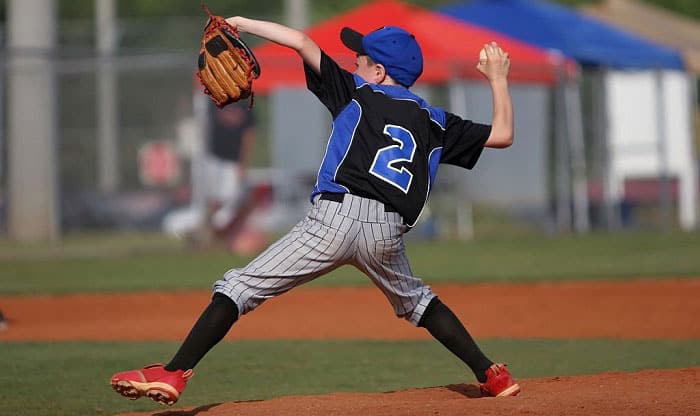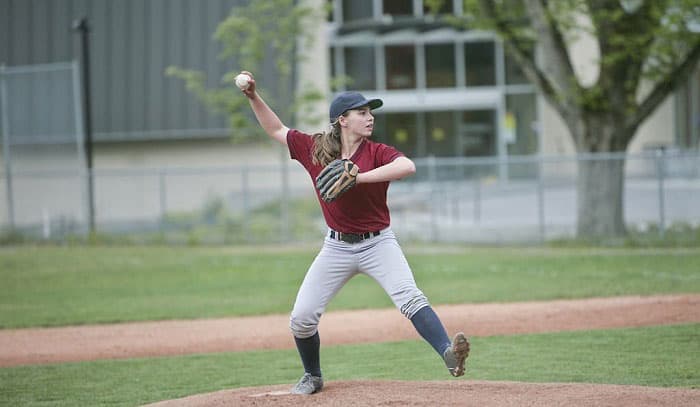Most baseball positions, moves, styles, rules, and even statistical tools are written in abbreviations. But why learn about the abbreviations and functions if you can play by impulse?
Well, technically, you cannot enter a baseball game without playing by the rules. To become an expert in the game, you will have to observe things as simple as abbreviations. For now, let us take the first step by learning ‘what position is sp in baseball?’
Contents
What Does SP Mean in Baseball?
Before knowing SP’s position in baseball, it is essential to understand “what does SP stand for in baseball?’
SP indicates the starting pitcher in baseball. A starting pitcher begins the pitching sequence for each team.
A “game started” is honored to a starting pitcher once he has thrown the first pitch to the first batter of the opposite team. He is supposed to pitch for a good portion of the game. However, depending on circumstances like endurance, skill, strategies, and the like, he may or may not sustain for the entire game.
He gets to earn the title ” ace ” if he is picked as the best pitcher on the roster, he gets to make the title “ace.” But that would also mean that he cannot pitch a game without taking several days’ worth of rest.
A professional SP is set to rest between three (3) to five (5) days before pitching for another game. This observance of such a policy recognizes the immense responsibility of a starting pitcher and emphasizes the need for the team to conserve its best SPs.
A team roster of SPs consists of four (4) to six (6) players. These players play in observance of a sequence referred to as rotation.
Five (5) men for an SP roster in today’s baseball is more than enough.
Is the SP Position Difficult to Play?
Yes. The idea alone of having to stand on the pitching mound and pitch intensely into the game is, in itself, challenging. Moreover, the SP position in baseball requires one to be attentive to the very stealthy bunted balls to bounce them back to the mound in a perfectly synchronized effort.
Add in the very dreary task of countering half-pulled (weak grounded) pitches, and you will find a primarily demanding job.
These facts, however, still cannot speak for the rest of the baseball players, for the difficulty is subjective. What is difficult for one player is a tad effortless for the other. All that, in the end, boils down to which one is the most difficult according to the majority.
And the majority of the baseball players all agree that the Shortstop is the most challenging position in baseball.
What Is the Function of Rotation for SP?
The rotation acts as an essential strategy for economizing, preserving, and conditioning the starting pitchers into a well-calculated lineup. It resembles a lineup but stands out with its unique applications.
While the lineup sees the players following a sequence in the same game, the rotation assigns each starting pitcher at different games. Therefore, a five-man SP roster equates to five games for each.
Rotation rules also keep the SPs from playing twice in a game, maintaining a ratio of one pitching in every five games. Consequently, rotation keeps SPs from being exhausted since the start-pitching is a very exhausting and strenuous task.
Is the Rotation a Fixed Set of Rules?
Not. It is not entirely fixed when it comes to the possibility of injuries, untoward incidents, sudden refusal to pitch, and other force majeure. Outside these, every team is to observe the same rotation sequence undisturbed.
Who Are the Top Starting Pitchers of All Time?
What the sp stands for in baseball highly depends on the performance of the starting pitchers. For context, here are the top starting pitchers of all-time in MLB history:
- Tom Seaver
Even the Mets declared that Seaver is one of the best SPs in their team’s roster. Seaver’s best moments in MLB history can fully attest to that!
Who could forget his 1969 near-perfect game? It was his 300th career victory in New York (1985), his pullout on Met’s 7-2 during the 1973 National League Championship Series, and many, many more.
Analyzing Seaver’s reputation, experts concluded that his performance was not the only factor that brought him to a Hall of Fame pedestal in 1992. It also showcases the extent of his skills, professionalism, and overall command, say the voters.
- Pedro Martinez
Martinez is easily referred to as the most dominant pitcher in MLB history! Martinez held in his hand the momentum of star-level pitching in seven straight seasons from 1997 to 2003.
And what does his record say, besides his suited Cy Young nominations: a superstar win-loss record of 118-36, responsible for keeping the ERA league afloat from 1997 to 2003.
- Greg Maddux
Of all his achievements, Maddux can be remembered for one thing: he did not have to put on a show with fastballs. Instead, his move turned out to be more innovative by focusing on the weakest hitter.
Another striking genius that set Maddux as a celebrated starting pitcher is his deliberate tactic of going for one of the eighty-one (81) spots in the strike zone instead of dividing it into nine (9) zones.
Other top baseball SP position players:
- Roger Clemens
- Steve Carlton
- Clayton Kershaw
- Jim Palmer
- Tom Glavine
- John Smoltz
- Justin Verlander
- Nolan Ryan
Conclusion
What position is SP in baseball?”
Well, know you know it is a starting position among a roster of four to five players taking turns pitching for four to five different games each.
The SP position is critical and challenging to maintain, albeit not the most difficult. The rotation proved to be most practical among the rules and systems governing the starting pitch position. It preserves the pitchers’ energy and health.

A powerful swing and the ball is flying across the field, just one hit, and we might never forget the thrill it brings. I do not know about you, but I never do. Every baseball game is the chance to compete with others and cooperate with your teammate. It is among my biggest passions.

















